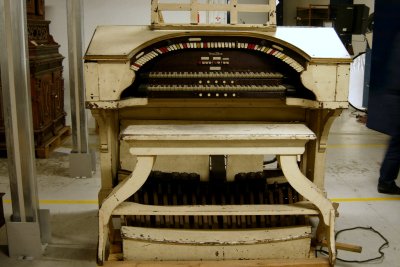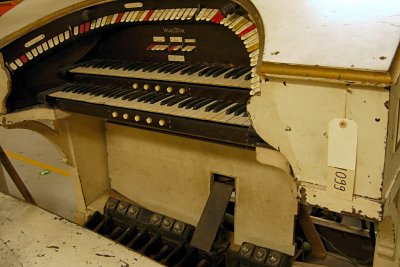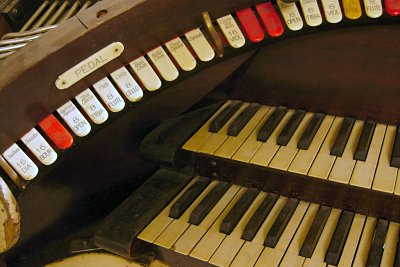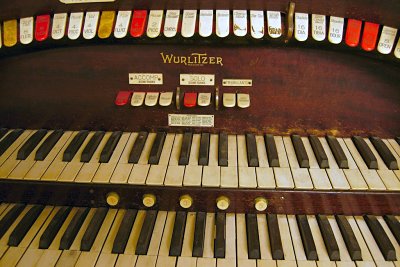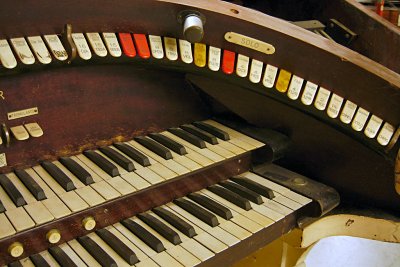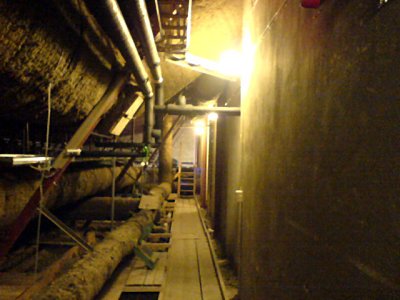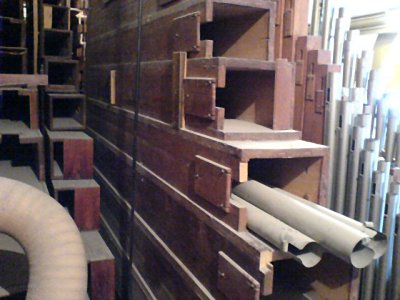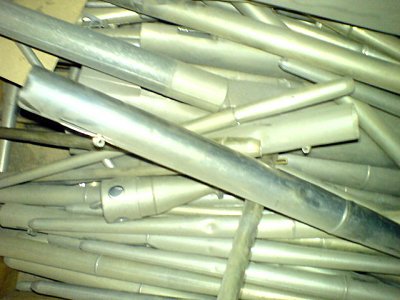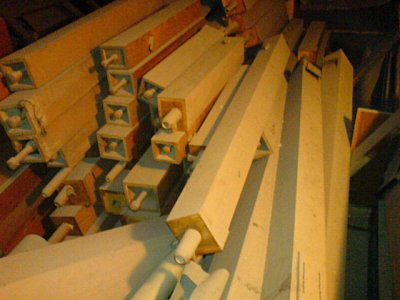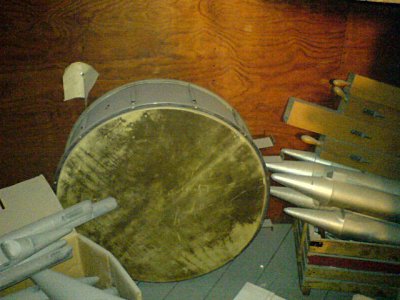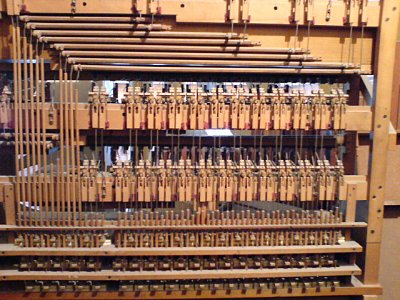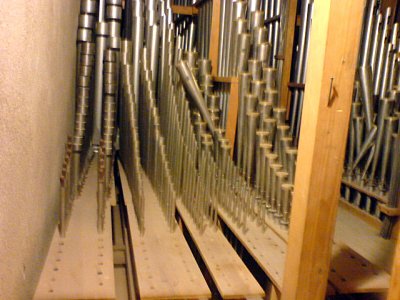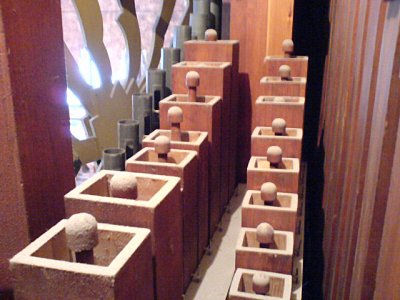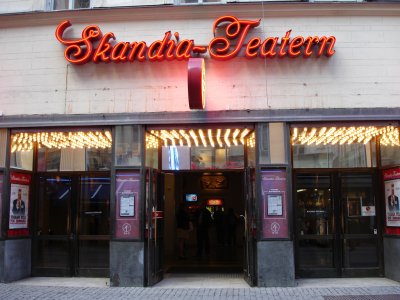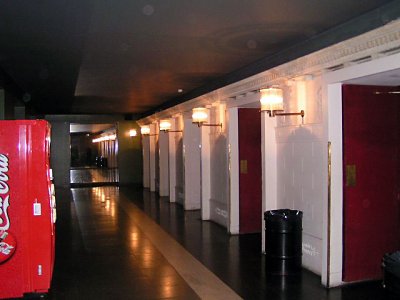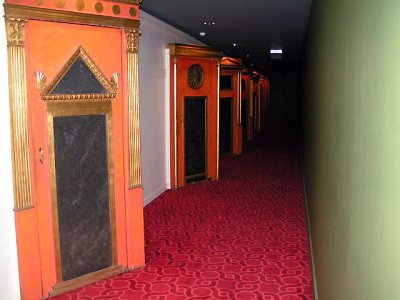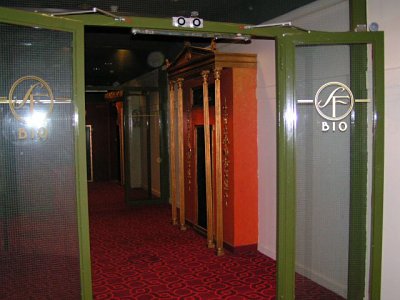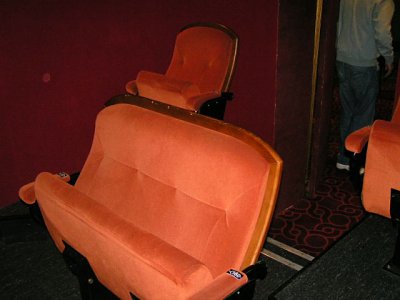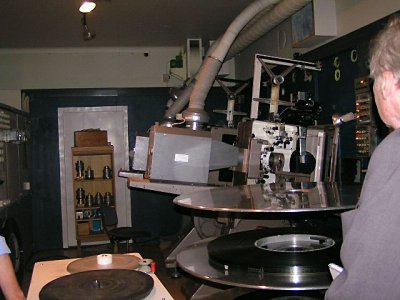
|
|
2/7 Mighty WurliTzer
|
|
This month's featured organ is the 2/7 Mighty WurliTzer Theatre Pipe Organ that was originally installed in the Skandia Theatre in Stockholm, Sweden. In 1926, three years after the threatre opened its doors to the public for the first time, Willard Ringstrand gave the inaugural concert on the instrument. The organ was later removed from the theatre and installed at Stockholm City Hall. It is the Fifty-fourth instrument to be featured at Walnut Hill. This little TPO that could is the only WurliTzer Theatre Pipe Organ in the entire country of Sweden. After serving the Stockholm City Hall for a number of years, silence fell upon the little white and gold console following the installation of a much larger five-manual Classical Pipe Organ. Many years later, the Skandia WurliTzer was found stored in a hodge-podge of parts in an attic behind the big organ. The Skandia Theatre 2/7 Mighty WurliTzer has been documented in another page on Walnut Hill in the News and Editoral section, thanks to the work of Fellow Walnut Hill Wall of Fame member Per Olef Schultz. To see this page which contains many more pictures and lots of useful information, click here. |
A Closer Look at the Console |
|
The console was taken to be restored at a well known music service shop. As you can see, there is a lot of work to do to bring this lovely little instrument back to the white and gold finish it once had when it was new. Here, we see the playing table of the 2/7 Mighty WurliTzer Theatre Pipe Organ console. Though the wood is very worn, the stop tongues are in surprisingly good shape. The natural keys will need new caps. Here, we see the Left Bolster of the console containing the Pedal stops. You can plainly see that some of the tongues are newer than others. Some of the flue stops are bright white, while others have turned yellow with age. Here, we see the Center Bolster of the console, sporting the original gold WurliTzer decal above the back rail stops. Notice the fingernail marks on the fallboard from the many years of playing that this organ received while at the theatre. Here, we see the Right Bolster of the console where the Solo stops live. Most of these appear to be originals to the console. Note the little metal hoods over the lights, which are also original factory fittings. |
1:15 AM 9/5/2008
A Closer Look At The Pipework |
|
The pipework was found stored in piles and wooden crates in the attic behind the big five-manual installation at Stockholm City Hall. Almost all the pipes were found, along with the Percussions and Toys. Though covered in a layer of dust from many years of neglect, very little actual damage was seen. When the organ was found, the many assorted parts were strewn about and covered with soot-laden dust from the coal-fired boiler that warms the building. It was as if they had been tossed aside and forgotten. Pipes were stacked all over, like these large Tibia bass pipes grouped in a neat pile near other ranks that are still standing in their chests. Other pipes were not stored so neatly, like this jumbled pile of assorted metal Reed pipes. Many of these were badly damaged and would need lots of loving care in the pipe shop to bring them back to playable condition. The wood pipes faired better, being of sturdier construction than their metal kin. You can see the years of accumulated dust that covers everything. Drums with hide skins sit near a stack of metal flue pipes, awaiting discovery by our intrepid volunteer team of restoration technicians. The electropheumatic moving combination action was found to be in surprisingly good shape, though lots of cleaning, adjusting and testing would be needed to get it working again. Much of the pipework was still sitting in the chests when the organ was found. Here, we can see at least six ranks still standing tall, though the silence of these once golden voices is somewhat eery. Some of the pipes, like these tall wooden Tibias, were still standing tall in their chests. They once spoke in City Hall before the big Classical Pipe Organ was installed, but now stood dormant, dirty and tired, waiting to be saved. |
A Closer Look at the Theatre |
|
Opened on September 20, 1923 with 1299 seats, the Skandia Theatre was designed by Architect Eric Gunnar Asplund. This movie palace was based on a neoclassic theme with a semi-atmospheric ceiling. The ceiling had 60 silk covered star shaped lamps, which were extinguished one-by-one before the start of the film. In 1926, the 2/7 Mighty WurliTzer Theatre Pipe Organ was installed. The unique Skandia is housed in a mid-19th century building located on the corner of Drottninggatan and Apelbergsgatan. Svensk Filmindustri assigned Erik Gunnar Asplund the task of designing the interior. Today he is internationally known as the architect and interior designer for such creations as the Stockholm City Library and Skogskyrkogården (the Woodland Cemetery) and as the chief of the 1930 Stockholm Exhibition where the Swedish modern movement - the functionalism - broke through. After you go through the lobby, there is a hallway at the rear of the auditorium with many doors leading inside. At the end of this hallway is a mirror that gives the illusion of the hallway being much longer than it actually is. In designing the Skandia, Asplund tried to achieve a feeling of lightness, playfulness and festive splendor. He gathered several young, then unknown artists of the day to create the ornamentation, which is still intact. The Skandia attracted a great deal of attention and enthusiasm as soon as it was inaugurated in 1923.
The theatre currently has 687 seats. In recent years the theatre's life has been patchy. From 1968 to 1991 it was re-named Look Theatern. It then reverted back to its original name before closing in 1996. This hallway leads to the Royalty Box, a special place where the seats reserved for the King and Queen of Sweden are located. Here, we see the entrance to the Royalty Box, These were the best seats in the house for viewing the crowd, watching movies, and listening to the Mighty WurliTzer. These plush seats in the Royalty Box are where for many years, the King and Queen, along with their aides, sat to be entertained in luxurious comfort. The Skandia is an audience's chamber of dreams, a magical cult center. This cinema is one of the great masterpieces of Swedish 1920's classicism. Asplund admirers from around the world arrive on pilgrimages to this attraction of international importance. The auditorium originally had hanging lamps as stars. The interiors are covered with warm red velvet, embroidered with religious motifs in silver and gold thread. This magnificent example of textile art is unique in Sweden. At the back of the orchestra section are love-seats. For more advanced romantic encounters, there are intimate boxes in the balcony. Here, we see one of the movie projectors in the projection room. Since 1993 the cultural preservation unit of the Stockholm County Administrative Board, the City of Stockholm and the Central Board of National Antiquities have all agreed that the Skandia should be granted historical building status, along with the Rival, Draken and Park cinema theatres. But nothing has happened because the building owners disagree. The Skandia closed as a public cinema theatre in 1996 but was reopened in 1999 under new management. In May of 2000 the Stockholm County Administrative Board decided that the Skandia Theatre should not be granted historical building status, the news of which came a tragic surprise. The theatre closed its doors to the public once more on July 31, 2000. Today, its future is unknown. |
Free Music Downloads |
Historical Archive RecordingsNot many recordings exist that were done on this little TPO that could. These tracks, were found after some dubious searching through the City Hall Archives.
|
